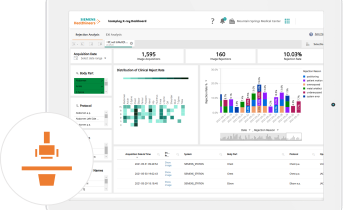Hospital Build Europe
In Berlin, from 24-26 April visitors to this international congress and trade fair will hear of medical imaging, process optimisation and facility management, and the latest construction, operation and equipment trends The event will run alongside Euro ID, a trade fair for automatic identification, and conhIT, an IT healthcare industry tradeshow.

Hospital Build Europe is the only event that brings together investors, planners, contractors and managers of major healthcare building projects with service-suppliers in planning, design, building, operations, management and refurbishment. The launch event, Hospital Build Europe 2011 in Nuremberg, attracted 58 exhibitors and 2,000 visitors from more than 50 different countries.
Key highlight of the Hospital Build Europe will be a series of conferences focusing on five of the most important issues the health industry currently faces, such as the design, build and upgrade of facilities, process optimisation and facility management. Furthermore, within the scope of the “Leaders in Healthcare” conference, experts of various backgrounds will provide an overview of the current challenges in the health industry and illustrate how companies and institutions can successfully overcome them.
The business-to-business platform is set to provide answers on how healthcare operators can expand and enhance their facilities by choosing the right expertise, products and services. Nearly 60 international exhibitors will offer insights into the latest developments, hold workshops and showcase their solutions in live presentations.
RADIOLOGY
On 24 April a special session will focus on radiology and medical imaging. The available offers for modern imaging equipment, apart from X-ray machines, are diverse and innovative but expensive. This session will showcase the latest products, new and improved fields of application and the optimised use of imaging equipment in healthcare services.
Professor Georgios Sakas, a doctor of engineering and head of Cognitive Computing and Medical Imaging Competence Centre at the Fraunhofer Institute for Visual Computing, will speak on the shift from imaging to navigation. His research team in Darmstadt, Germany, develops solutions for using existing data more effectively, especially in diagnosis, treatment planning and intraoperative navigation.
‘New software solutions have greatly changed medicine in the last few years,’ the professor points out. ‘Imaging procedures in particular facilitate the daily work of doctors and have earned a firm place in everyday hospital routines.’
However, the aim is to use as much information from images as possible in a great variety of application areas to minimise the effort required for interactions with image data during an operation. One of the latest developments is a 3-D hologram of the human liver, based on MRI scans. ‘This will help physicians to find tumours and other diseases of the liver more easily,’ he explains.
In addition, Dr Arne Hengerer, Director of Molecular MRI at Siemens, will provide an overview of developments in medical imaging.
New options provided by interventional radiology will be discussed by Professor Siegfried A Thurnher, Chairman of the Department of Radiology and Nuclear Medicine at the Barmherzige Brüder Hospital, in Vienna. He will demonstrate new fields of application and show the advantages for both hospitals and patients – and the expertise and equipment needed.
15.02.2012











